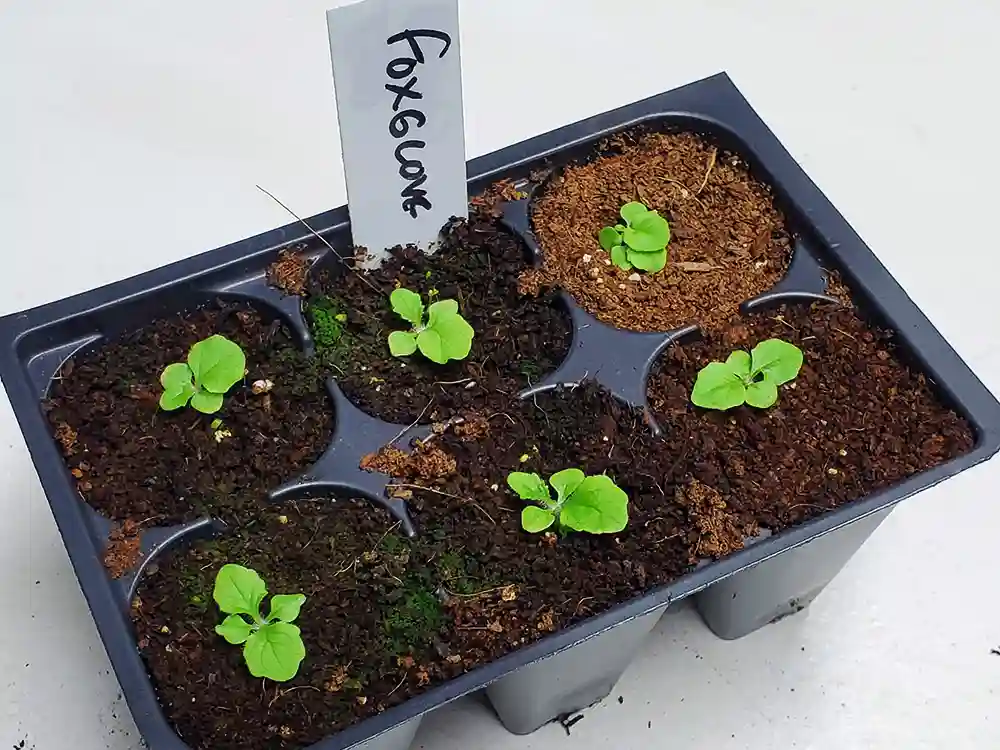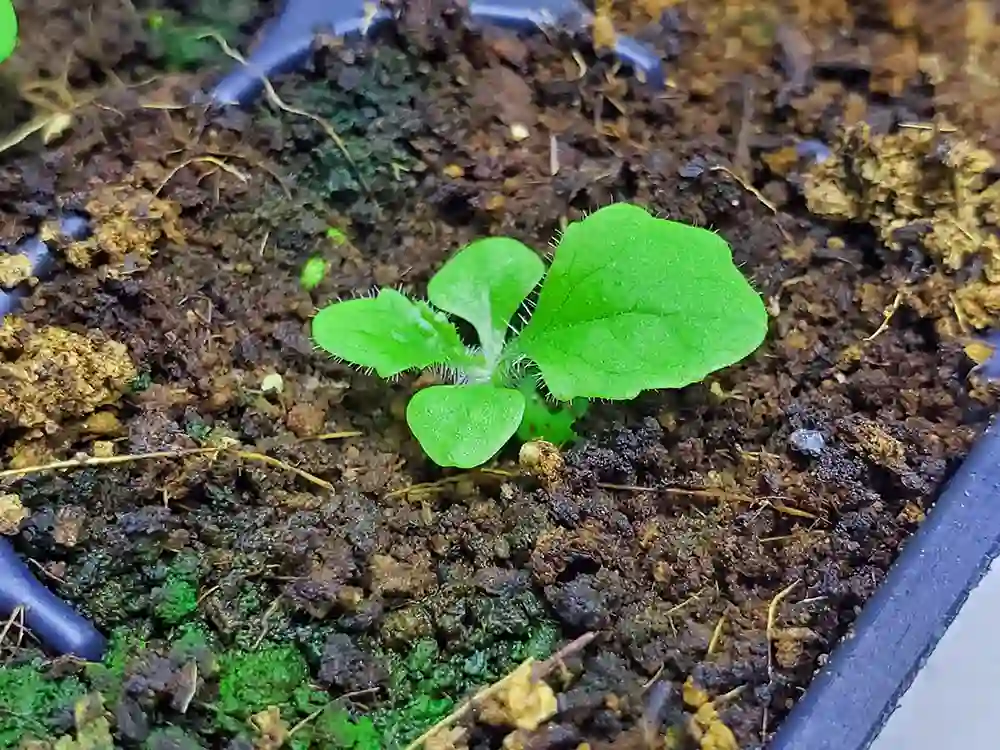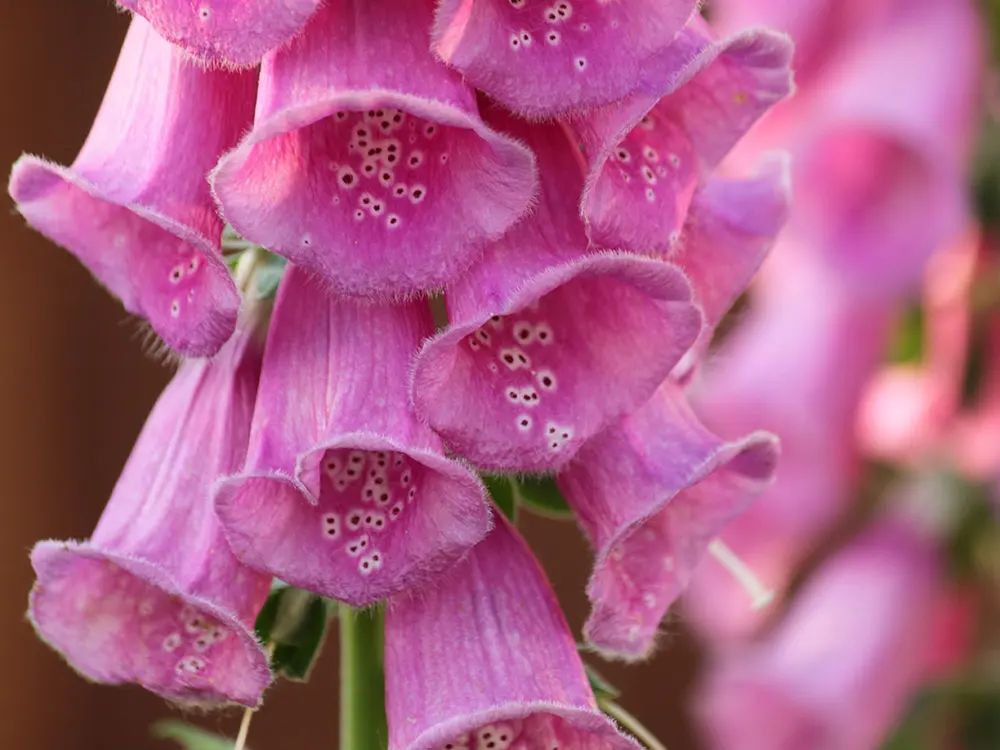Flower Gardening
How to Grow Foxglove from Seed: Guide for Eye-Catching Blooms
Are you ready to learn how to grow foxglove from seed? You’re in luck! Today, we’re going to dive into the wonderful world of Foxgloves (Digitalis purpurea) and explore the step-by-step process of growing these stunning, bell-shaped flowers from seed.
In my own garden, I’ve had great success growing foxglove from seed, and I’m excited to share my experiences and tips with you. So, let’s get started on our Foxglove-growing journey together!
These biennial or short-lived perennial plants not only add a touch of charm and elegance to any garden but also attract pollinators like bees and hummingbirds. By the end of this article, you’ll feel confident and excited to start growing your very own Foxgloves.
Foxglove Basics
| Common name | Foxglove |
| Scientific name | Digitalis purpurea |
| Days to bloom | 90-120 days |
| Light | Partial shade or dappled sunlight |
| Soil | Well-draining, fertile soil, pH 6.0-7.0 |
| Water | Consistently moist but not waterlogged |
| Fertilizer | Balanced, slow-release fertilizer |
| Pests | Aphids, slugs, snails |
| Diseases | Powdery mildew, rust |
Choosing the Right Foxglove Seeds
Selecting a suitable foxglove variety
Before you start to grow Foxglove, it’s important to choose the right variety for your garden. There are numerous varieties available, each with its unique characteristics, such as color, height, and bloom time. Some popular varieties include ‘Pam’s Choice,’ ‘Apricot Beauty,’ and ‘Giant Shirley.’
Take some time to research the different Foxglove varieties and consider factors such as your garden’s size, existing plants, and your personal preferences when making your choice. Remember that variety is the spice of life, so don’t be afraid to try something new!

Preparing to Sow Foxglove Seeds
Choosing the right time to sow
Timing is crucial when it comes to sowing Foxglove seeds. You can choose to sow your seeds indoors or outdoors, depending on your climate and personal preferences. For most Foxglove varieties, it’s best to sow seeds indoors during late winter or early spring, about 10-12 weeks before your last expected frost date.
This gives the seeds enough time to germinate and develop into sturdy seedlings before transplanting them outdoors. In my zone (6b), I usually sow Foxglove seeds indoors in late February or early March.
If you prefer to sow your seeds outdoors, you can do so in the spring or fall, but be prepared for a longer germination period and a more unpredictable outcome.
Preparing the seed trays or containers
If you’re starting your seeds indoors, use a seedling tray or small pots filled with a high-quality seed starting mix. I prefer using individual cells in a seedling tray, as it makes transplanting easier and minimizes root disturbance.
Sowing Foxglove Seeds

Planting depth and technique
Foxglove seeds need light to germinate, so it’s essential to sow them on the surface of the soil without covering them completely. You can lightly press the seeds into the soil with your finger or the back of a spoon to ensure good seed-to-soil contact.
When sowing seeds indoors, cover the tray or pots with a thin layer of vermiculite or perlite to help maintain moisture without blocking light.
When I first started to grow Foxglove from seed, I made the mistake of covering the seeds with too much soil, and they didn’t germinate well. Once I learned about their light requirements, my germination success improved dramatically.
Tips for successful germination
Foxglove seeds usually germinate best at temperatures between 65-75°F (18-24°C). If your indoor temperature is lower, consider using a seedling heat mat to provide consistent warmth. Make sure you keep the soil consistently moist but not waterlogged, as Foxglove seeds are sensitive to both drought and overwatering.
To maintain humidity, you can cover the seed tray or pots with a plastic humidity dome or plastic wrap, but make sure to ventilate it daily to prevent mold and fungal growth. Keep an eye on your seeds for signs of germination, which should occur within 14-21 days.
Caring for Foxglove Seedlings
Providing adequate light
Once your Foxglove seeds have germinated, it’s essential to provide them with plenty of light to prevent weak, leggy growth. Seedlings grown near a sunny window will benefit from at least 6-8 hours of bright, indirect light daily. If you don’t have access to sufficient natural light, you can use a grow light to ensure your seedlings get the light they need.
I use a seedling grow light setup to provide my Foxglove seedlings with consistent light exposure. This has made a huge difference in the quality and vigor of my seedlings, and I highly recommend it for anyone looking to grow foxglove from seed.
Transplanting seedlings
When your Foxglove seedlings have developed at least two sets of true leaves and the outdoor temperatures have warmed up, it’s time to transplant them to their final location in the garden.
Before transplanting, you’ll need to harden off your seedlings by gradually exposing them to outdoor conditions over 7-10 days. This helps them acclimate to their new environment and reduces transplant shock.
Transplanting Foxglove seedlings in the late afternoon or on a cloudy day helps minimize stress and gives the plants a chance to settle in before being exposed to direct sunlight.


Planting Foxgloves in the Garden
Choosing the right location
To grow Foxglove successfully, you need to choose the right location in your garden. Foxgloves generally prefer partial shade or dappled sunlight, although they can tolerate full sun if provided with enough moisture. They also need well-draining soil to prevent root rot and other diseases.
I found that the Foxglove plants thrive best in an area that received morning sun and afternoon shade, with a well-draining, fertile soil enriched with compost.
Planting techniques and spacing
When planting your Foxgloves, dig a hole that’s the same depth as the root ball and about twice as wide. Gently remove the seedling from its container, being careful not to disturb the roots, and place it in the hole. Fill the hole with soil, firming it gently around the root ball to eliminate air pockets. Water your newly planted foxglove thoroughly to help it settle in and establish strong roots.
Generally, you should space your plants 12-18 inches (30-45 cm) apart, depending on the variety and its mature size. Giving Foxgloves enough room to grow not only promotes better air circulation, reducing the risk of diseases, but also allows the plants to showcase their full beauty.
Foxglove Pests and Diseases
Like any garden plant, Foxgloves can be susceptible to pests and diseases. Some common issues include aphids, slugs, snails, and diseases such as powdery mildew and rust. To keep your plants healthy, regularly inspect them for signs of pests or diseases, and take appropriate action if needed.
| Pest/Disease | Symptoms |
|---|---|
| Aphids | Yellowing, curling, or distorted leaves; presence of small, soft-bodied insects; sticky honeydew on leaves |
| Slugs | Irregular holes in leaves and stems; slimy trails on the plant or nearby surfaces |
| Snails | Holes in leaves and stems; presence of snail shells |
| Powdery Mildew | White, powdery substance on leaves and stems; yellowing, curling, or distorted leaves |
| Rust | Orange, yellow, or brown pustules on leaves; yellowing or browning of leaves; defoliation |
When I noticed aphids on my Foxgloves, I used insecticidal soap to control the infestation. I also found that encouraging beneficial insects like ladybugs and lacewings to my garden helped keep pests at bay. For slugs and snails, I’ve had success using beer traps and diatomaceous earth as natural control methods.
Encouraging Reseeding and Propagation
One of the joys of learning to grow Foxglove from seed is that you can encourage reseeding and propagation to enjoy these beautiful plants year after year. To do this, allow some of the seed pods on your Foxgloves to mature and release their seeds back into the soil.
If you want to collect seeds for future use or to share with friends, simply remove the seed pods when they turn brown and dry, and store the seeds in a cool, dark place.
Conclusion
Now that you’ve learned how to grow Foxglove from seed, it’s time to get started on your own Foxglove-growing adventure. With a little patience, care, and attention, you’ll be rewarded with breathtaking, elegant blooms that add a touch of magic to your garden.
Remember that growing Foxgloves is an ongoing learning process, and each season brings new opportunities for growth and discovery. Embrace the journey, and enjoy the beauty and charm that Foxgloves bring to your garden. Happy gardening!
FAQ: Grow Foxglove From Seed
Will Foxglove seedlings bloom first year?
Some Foxglove varieties may bloom in their first year if sown early, while others are biennial, meaning they produce foliage the first year and bloom in the second year.
Will Foxglove reseed itself?
Yes, foxglove can reseed itself if allowed to mature and drop seeds naturally. This creates a continuous, self-sustaining population of Foxglove in your garden.
How do I save Foxglove seeds for next year?
To save Foxglove seeds, allow seed pods to mature and dry on the plant. Collect the pods, remove seeds, and store in a cool, dark place until ready to plant next year.
How long are Foxglove seeds viable?
Foxglove seeds can remain viable for up to 3 years if stored properly in a cool, dark, and dry environment.
Do hummingbirds like Foxglove?
Yes, hummingbirds are attracted to foxglove’s tubular flowers, which provide nectar and shelter for these tiny birds.











